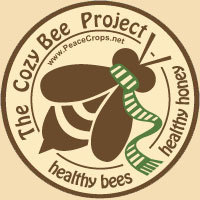It’s tree planting month! A few friends have approached me in the last few weeks about sponsoring a tree or two in the orchard, and this got me thinking that there might be others out there who would be interested as well. So, I’m sending out this list to let everyone know about the exciting things we’re going to plant, and maybe catch the imagination of any friends and family who would like to collaborate with us on creating a fantastic orchard. This is your chance to “Buy the Farm” as it were.
All the trees (except where noted) are from orchardists in Oregon or southern Washington, and all are varieties selected to be specifically compatible with the local weather and/ or pests in this region. In most cases, we’ve selected heirloom varieties that have been proven both tasty and resilient for generations, some going back as far as two centuries or more. All will be on semidwarf rootstock, meaning they will grow to be about 12-16 feet tall; small enough to be easily harvested, but heartier than a full dwarf tree. We will buy at least two of each type, to ensure good pollination for those that aren’t self-pollenating, and increased production for those that are.
$25 is the sponsorship price for each tree. We’re hoping to plant at least as many trees as are shown in the list, maybe more if we can afford it, because the more we get in this year, the more we will have in production when they start bearing in three or four years. And as you might imagine, a sponsorship comes with the promise that you can stop by and pick yourself one of your fruits any time you want! Even if you’re not interested in buying a tree, I want everyone to know what’s going on with the new orchard, because it’s very exciting for us. Here are this year’s trees, with descriptions from the catalogs mixed with notes by me (drum roll, please):
APPLES
“Gravenstein”: Very juicy and flavorful, this classic, early ripening variety makes the best cider and pies. Vigorous and reliable, Gravenstein produces abundant crops of large, red and green striped fruit. Discovered in 1669 in Denmark.
“Spitzenberg”: Discovered early in the 18th century near Esopus, New York, and is reputed to have been a favorite apple of Thomas Jefferson, who planted several of the trees at Monticello.
“Honeycrisp”: A large, round, scarlet red fruit with a yellow background, Honeycrisp is very crisp, juicy, and flavorful. Honeycrisp ripens in early September and can be stored for several months in cool storage. It grows and colors best in the Northwest and other northern regions of the U.S.
“Chehalis”: Very flavorful and great for fresh eating, this unique Northwest variety is a very large, beautiful, yellow fruit with crisp and juicy flesh. One of the best disease-resistant varieties, Chehalis ripens in mid to late September.
PEARS
“Orcas”: A very large and attractive yellow pear with carmine blush and smooth buttery flesh, Orcas is richly flavorful and very juicy. Discovered on Orcas Island, Washington, Orcas is well adapted to our Northwest growing conditions. Excellent for fresh eating, canning and drying, Orcas is very reliable and productive and ripens in early to mid-September.
“Brandy”: A pear for perry (pear cider, similar to hard apple cider, but with a wonderful pear aroma). Small pear, slightly larger than a Seckel, some russet with an attractive red blush. Makes a refreshing, medium acid, low tannin perry. From England in 1820.
PEACH “Charlotte”: Very resistant to Peach Leaf Curl and bears good crops of delicious fruit. Orange-red and semi-freestone, Charlotte fruit is sweet, juicy, and flavorful. Charlotte also appears to be particularly resistant to bacterial canker, a bark disease that can damage trees in our wet climate. [I also like it because it’s named after my niece]
APRICOT “Puget Gold”: Probably the best Apricot for the Pacific Northwest, this Washington State U. introduction bears good crops of flavorful, large, orange-red fruit. An attractive, compact tree, Puget Gold grows 12-15 ft. in height.
CHERRY “Black Tartarian”: Rated as one of the most flavorful cherries, Black Tartarian bears great crops of very dark red, juicy, sweet fruit. As a testimony to its happiness in our region, a Black Tartarian tree that was planted in Eugene, Oregon in 1860 is still alive and thriving. It may be the oldest and largest Sweet Cherry tree in the US and has been honored as a Heritage Tree.
PLUM “Italian”: A sweet, dark purple, freestone plum with firm amber flesh, Italian is great for fresh eating and excellent for drying. Widely planted in the Northwest, it is productive, reliable and easy to grow. Italian ripens in late August.
PLUM “Bavay’s Gage”: Exceptional, late-ripening variety. This very productive and self-fertile variety bears good crops of yellowish-green plums with candy-sweet, golden flesh. Bavay’s Gage ripens in late September and hangs on the tree for several weeks. Discovered in 1832.
FILBERT “Yamhill”: This recent introduction from Oregon State University features an attractive, compact growth habit, good crops of delicious nuts, and total resistance to Eastern Filbert Blight.
ALMONDS: There is a local nursery that grows specially bred almods that were developed in the Ukraine that (supposedly) work in our coastal northern climate. I want to get a pair to see if it’s true.
OLIVE “Arbequina”: A new and valuable Spanish variety, Arbequina is a very attractive, naturally compact tree. Self-fertile and early ripening, Arbequina begins bearing the year after planting and makes gourmet quality olives and oil.

